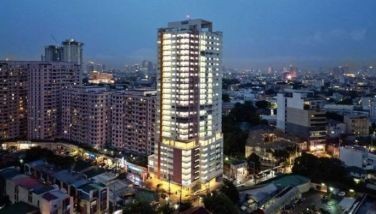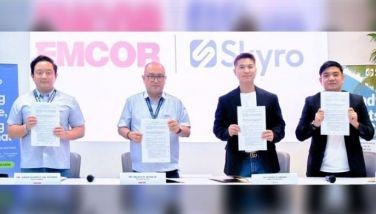Much better deal than Cha-cha

The successful conduct and outcome of the public bidding for the privatization and rehabilitation of the Ninoy Aquino International Airport (NAIA) could be the best argument to reject Charter change (Cha-cha). If only to lift the purported restrictive provisions of the 1987 Constitution as the casus belli for Cha-cha, the just concluded competitive public bidding to privatize NAIA gives impetus to our homegrown businessmen with foreign investors/partners to have the bold confidence on the Philippine economy.
Last Friday, a consortium led by one of the country’s biggest conglomerates won the public bidding for a 15-year concession to rehabilitate, upgrade, and to operate NAIA. The consortium of San Miguel Corp.-Strategic Airport Partners & Co. (SMC SAP) will bring in its foreign partner Incheon International Airport Corp., the company handling one of the best gateways in the world, according to Skytrax.
The consortium won the contract for its highest bid offer to the government of revenue sharing at 82.16 percent, beating rival bidders that tendered way below its offer. In total, the government expects to raise more than P900 billion in revenue from turning over the operations and maintenance of our country’s premier gateway.
The SMC SAP concession is under a rehabilitate-operate-expand-transfer arrangement under the Build-Operate-and-Transfer (BOT) Law. The concession, however, provided it can be extended up to 10 years, depending on the performance of the consortium. For the first six years of the concession, the consortium would be required to spend a minimum of P88 billion for upgrading the services of the airport.
The government, through the Department of Transportation (DoTr) and the Manila International Airport Authority (MIAA), issued in August last year the invitation to bid for the concession contract. Invited were both local and foreign investors to bid for the P170.6-billion public-private partnership (PPP) project. The NAIA PPP project will cover all facilities of the ageing airport, including its runways, four terminals, and associated facilities all located in Pasay City.
It was billed as one of the quickest privatization processes for any government asset in history, with the bidding lasting less than six months. Actually though, it took almost a year if we take into account the first attempt to undertake the privatization of NAIA. The DOTR has already engaged the Asian Development Bank (ADB) as transaction advisor and was already in the process of preparation of the solicited process when the P267-billion unsolicited bid of the Manila International Airport Consortium (MIAC) came in.
The unsolicited proposal, however, contained government undertakings, which were prohibited under the BOT law, and the proponent was not willing to take the asset on an as-is-where-is basis. At that time, the NAIA privatization project already generated a lot of interest such that an open competitive bidding which was deemed more advantageous for the government.
Thus, the DOTr-PPP Center adopted the open competitive bidding for the NAIA privatization. To his best judgment, President Ferdinand “Bongbong” Marcos Jr. (PBBM) gave the go-signal to the DOTr-PPP upon the recommendation of the Cabinet economic cluster headed then by erstwhile Finance Secretary Benjamin Diokno.
Transportation Secretary Jaime Bautista underscored the urgency for the rehabilitation of NAIA at the soonest possible time to accommodate the resurgent demand for air travel. As mandated in the concession contract, SMC SAP & Co. has to elevate the passenger capacity of NAIA to at least 62 million per annum. Bautista cited the government study estimates that the Philippines would require an airport that can facilitate as many as 100 million per annum by 2050.
Currently, the NAIA facilities are very congested – with the capacity of 35 million passengers per annum, but is now reportedly handling as much as 50 million people. “We really need to modernize this airport so we can provide a better service for our passengers,” Bautista pointed out.
Thus, the DOTr chief vows to keep up with the government schedule to sign officially the concession agreement with the SMC-led consortium by next month to give the group a maximum of six months to arrange financing.
In response, the SMC-led consortium vowed to strictly comply with the demands of the concession, particularly elevating the service quality in NAIA and remitting fresh revenues to the government. “This aims to secure a favorable outcome for our shareholders, while also prioritizing fairness and long-term sustainability over immediate profits,” they added.
With the award, the SMC-led consortium headed by Ramon S. Ang, or RSA as he is more popularly called, will manage the airport until 2039 under the concession. RSA is also the man behind the New Manila International Airport (NMIA) – which is also being built by SMC in Bulacan. Still undergoing initial phase of the construction, it will become operational only by 2028.
In the meantime, the NMIA also awaits the approval of the proposed Bulacan Airport City Special Economic Zone and Freeport bill – where the country’s newest gateway will rise – which remains pending before the 19th Congress. The House of Representatives already approved on third and final reading its new version of the Bulacan Ecozone bill principally authored by Albay Rep. Joey Salceda.
This is the remedial legislation that removed the provisions of the original bill that both chambers of the 18th Congress approved but which PBBM who was freshly installed in office then vetoed in July 2022.
The House-improved version is scheduled for plenary debate along with its Senate counterpart improved version of the same bill. The 24-man Senate will need to show that they share the same desire to open up the Philippine economy for more investments.
This undertaking by the biggest conglomerates – local and foreign companies that pooled their resources in order to engage in the bidding battle – was a solid proof against Cha-cha. This means they have the confidence of doing their business right here in the Philippines. Thus, there is no sense to tinker with the present Constitution under the guise of lifting such limits to ownerships through foreign capital infusion.
The just concluded open competitive bidding for the NAIA privatization comes in as symbolic success.
It is certainly a much better deal than doing Cha-cha at all cost.
- Latest
- Trending




























